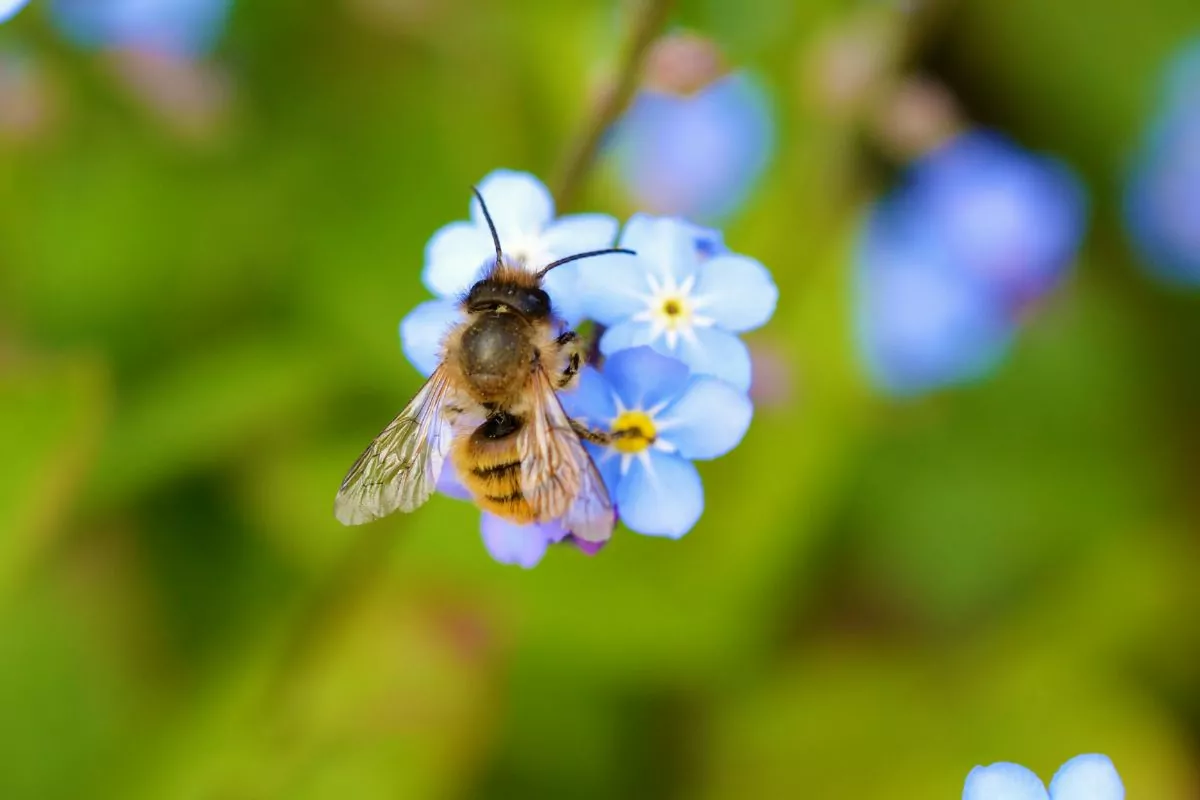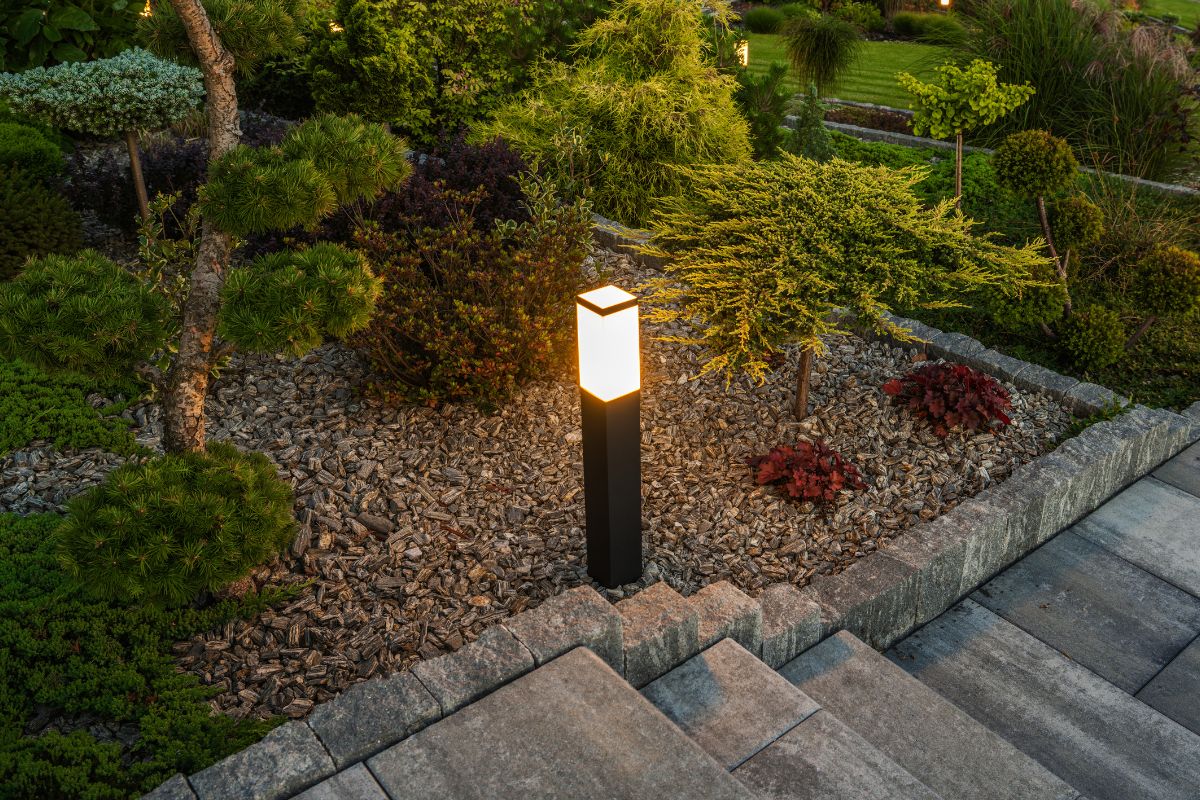As the sun sets and darkness envelops the world, we often rely on artificial light to guide us through our nighttime activities. But have you ever wondered how insects, especially bees, react to these sources of light?

Are they attracted to them or repelled by them?
In this article, we will explore the curious phenomenon of phototaxis in bees and answer some of your burning questions about their behavior towards light.
From bug zappers to blue lights, we will uncover what draws bees towards lights at night (see also: Can Bees Fly At Night?)and how to prevent them from entering your home. So, let’s dive into the mesmerizing world of honey bees (see also: How Many Bees Are In The World?)and their relationship with light!
Phototaxis?
Phototaxis is when an animal or insect is drawn towards light. It can be either positive, where the organism is drawn towards the light source, or negative, where it moves away from it.
This behavior is common in many insect species, including honey bees.
Positive phototaxis in bees is useful during daylight hours, when they use sunlight to navigate and locate flowers for nectar collection.
However, at night, artificial lights can disrupt their natural behavior and attract them towards sources that are not beneficial for their survival.
Understanding phototaxis can help us protect these important pollinators while still enjoying our outdoor lighting.
Bees At Night
Did you know that honey bees are unlikely to be drawn to artificial lights at night? Despite their attraction during the day, bees prefer to rest at night, in line with their circadian rhythm.
While some bees may still fly around these lights, it’s not common behavior, and they’ll typically stay close to their hive during nighttime hours.
Unfortunately, too many artificial lights can disrupt their natural behavior and even harm them.
We should consider protecting these essential pollinators by being mindful of outdoor lighting while still enjoying our illuminated spaces.
Bug Zappers?
If you don’t like sharing your space with insects that fly around your head but want to protect the bees, then you may be wondering if your bug zappers are harmful to bees.
Bug zappers may be effective at attracting and killing insects, but are they a threat to honey bees? The answer is no. As we’ve seen, while bees are attracted to light during the day, they are unlikely to be drawn to artificial lights at night.
What About Blue Light?
Blue light is known to attract honey bees due to their preference for shorter wavelengths.
Studies have shown that bees are more attracted to blue and ultraviolet light than other colors, which explains why they tend to favor blue flowers over red ones. In fact, the ability of bees to see UV light plays a crucial role in their pollination behavior.
However, it’s important to note that exposure to artificial blue light at night can disrupt a bee’s circadian rhythm and affect its behavior.
This can lead to negative impacts on the bee’s health and ability to perform critical tasks like foraging and navigation.
While blue light may be attractive to bees during the day, we need to be mindful of its potential effects on these vital pollinators and take steps to minimize their exposure at night.
What About LEDs?
Wondering if LED lights attract bees? Well, the answer is yes, but it depends on the color temperature of the light.

As mentioned earlier, bees are more attracted to cooler colors of LED light, such as green or blue, because it appears similar to daylight. They are not as interested in warm colors.
If you’d rather keep bees away, try using LED lights such as red or purple as they struggle to see these colors and won’t go near it! This way, you can help protect these vital pollinators while still enjoying outdoor lighting when you need it.
Are Bees Bothered By Light?
Too much artificial light can confuse bees and cause them to work at night. So, if you know you have some neighboring bees nearby, it’s best to keep lighting away from beehives to avoid disrupting their natural behavior.
How Do I Remove A Bee From My Room At Night?
If you have a bee in your room at night, don’t worry! You can remove it humanely. Just grab a large bowl and some paper. Then, gently guide the bee into the bowl and cover it up, so it doesn’t escape.
Once you’ve got the bee contained, take it outside and release it in an area away from your home. You’ll both be happier this way!
How To Deal With A Beehive
When dealing with beehives, it is important to act cautiously and carefully. If the hive is located in a place where it can cause a hazard or nuisance, it is best to contact a professional beekeeper or pest control specialist for assistance.
Before attempting to remove or relocate the hive, it is essential to identify the bee species, assess the size and location of the hive, and determine the best approach for removal.
The beekeeper or pest control specialist can help with this process and provide the necessary equipment and safety gear to do the job safely.
Why We Should Try And Save The Bees
Bees are an incredibly important part of our ecosystem, and it is essential that we do not kill them and instead work to preserve them. This is because bees are responsible for the pollination of a variety of plants, which are vital for our food sources.
Without bees, these plants would not be able to reproduce, leading to a drastic decrease in crop yields, which would lead to a decrease in the amount of food available for both humans and animals.
Furthermore, bees are also responsible for the production of honey, which is a popular food item and a key ingredient in many recipes.
In addition to the importance of bees to our food sources, they are also beneficial to the environment in other ways.
Bees play a major role in biodiversity, as they are responsible for the pollination of a variety of flowers, which help to provide food and shelter for other animals.
Furthermore, bees also help to reduce the amount of greenhouse gasses in the atmosphere, as they are responsible for the production of propolis, a substance which helps to reduce air pollution.
Finally, bees are also important in the production of wax, which is used in many products such as candles and cosmetics.
Attracting Bees Into The Yard
One of the best ways to attract bees into the garden is to provide them with a variety of flowers (see also: Best Flowers To Attract Bees)that bloom at different times of the year. Planting a mix of annuals and perennials will ensure that there is always something for the bees to forage on.
Try to choose flowers that are native to your area, as these will be easiest for the bees to recognize and find. Consider planting flowers in clumps rather than in single rows, as this will create a larger surface area for the bees to explore.
Additionally, avoid the use of pesticides in the garden, as these can be harmful to bees.
In addition to providing a variety of flowers, a bee-friendly garden should also have a water source.
Bees need water to stay hydrated, so adding a shallow dish of water with some pebbles or rocks in it can provide them with a safe place to land and drink.
Final Thoughts
In conclusion, honey bees are attracted to light, however they are not necessarily drawn to artificial light. They are naturally drawn to the sun, and the bright yellow and orange colors of the petals of their preferred flowers.
While artificial light may provide honey bees with a source of illumination, it does not provide them with the same nectar-rich flowers that the sun does.
Therefore, it is unlikely that honey bees are actively seeking out artificial light sources.
Honey bees (see also: The Best Sunflowers For Honey Bees)are an essential part of the natural environment, and it is important to understand the factors that draw them to certain areas.
By understanding that honey bees are attracted to light, but not necessarily artificial light, we can be better equipped to ensure their survival and protect them from potential predators.
In turn, we can ensure that the entire ecosystem benefits from their presence.
- Do Bug Zappers Kill Bees? Completely Explained - April 9, 2024
- Does Brake Cleaner Kill Bees? Full Explanation - March 20, 2024
- Do Bald-Faced Hornets Kill Honey Bees? & How to Protect Them - March 4, 2024
